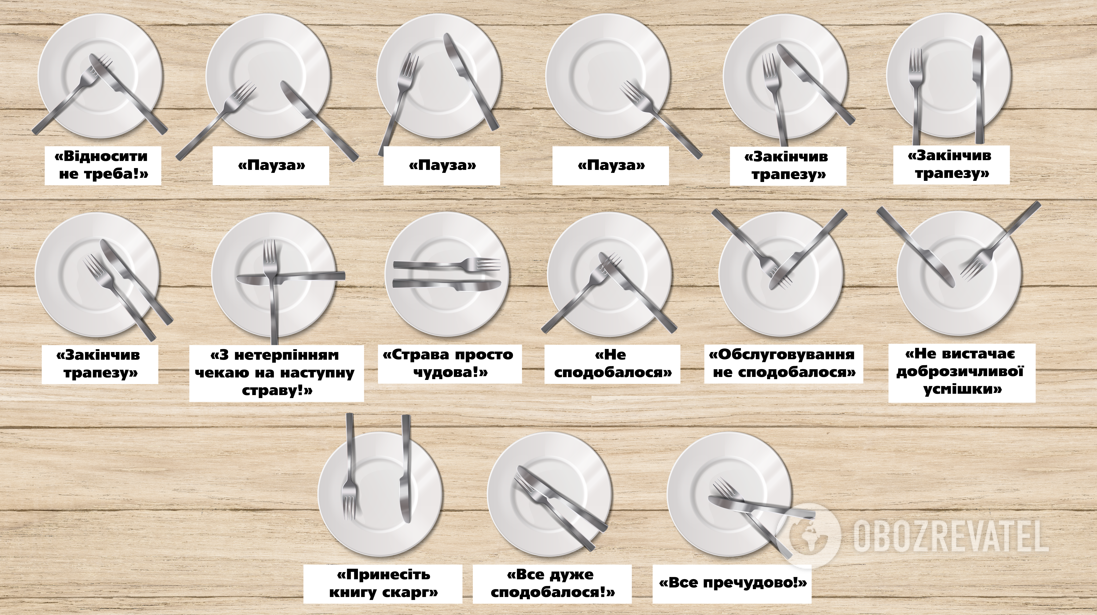Life
Table etiquette: what various knife and fork combinations mean. Infographic
Dining etiquette is not only about good manners but also about comfort and confidence. The placement of a knife and fork on a plate can carry certain information like the end of a meal, the expectation of a new dish, or even dissatisfaction.
Knowing table etiquette is essential to avoid unpleasant situations. Read OBOZ.UA article to find out what various combinations of cutlery mean.
Pause in eating
If the knife and fork are lying crosswise on the plate, it's a sign that you've taken a break from eating, and the waiter doesn't need to take the food away yet. The knife should be placed with the blade to the left, and the fork should be placed with the tines to the right. To avoid placing the cutlery on top of the food, place it so that the blade and tines of the fork touch the edge of the plate and the handles touch the table.
If the plate is completely empty, place the knife and fork in an "L" shape, with the blade pointing to the left and the tines to the right.
End of meal
If you want the waiter to take the plate away as soon as possible, you can use table etiquette to indicate that the meal is over. Most often, the knife and fork are placed as if to represent a clock, the time being half past six.
Alternatively, the fork and knife can be placed next to each other on the right side of the plate.
If you enjoyed your meal and are full, place the cutlery parallel, with the blade and tines facing up and the handles facing down.
Next course, please
If the fork and knife are placed crosswise on the plate, with the knife blade facing left and the fork tines facing right, the waiter should understand that it's time to serve the next course.
Everything is delicious
If the knife and fork lie parallel on the plate but look horizontally to the right instead of up, it means that you really liked the dish and everything was delicious.
You didn't like the food
It happens that the food was not to your liking. For example, you were served a cold soup or a salty salad. The following placement of the cutlery is an indication of dissatisfaction: place the knife and fork at an angle so that the knife blade crosses the tines of the fork.
Asking for a complaint book
A waiter's worst nightmare is to see a knife and fork lying parallel on the plate, blade and tines facing down. This means an extreme level of dissatisfaction and the customer's demand for a complaint book.
Becoming a regular customer
If everything was so great that you will definitely come to the restaurant again, try to express your delight with the help of table etiquette. The knife and fork should be placed together, tilted to the left, and the blade should be placed between the tines. There is a very fine line here. You have to be careful as a knife between the middle tines will indicate that you didn't like the dish. To express satisfaction, you should use the outer tines of the fork.
Subscribe to OBOZ.UA on Telegram and Viber to keep up with the latest events.




























